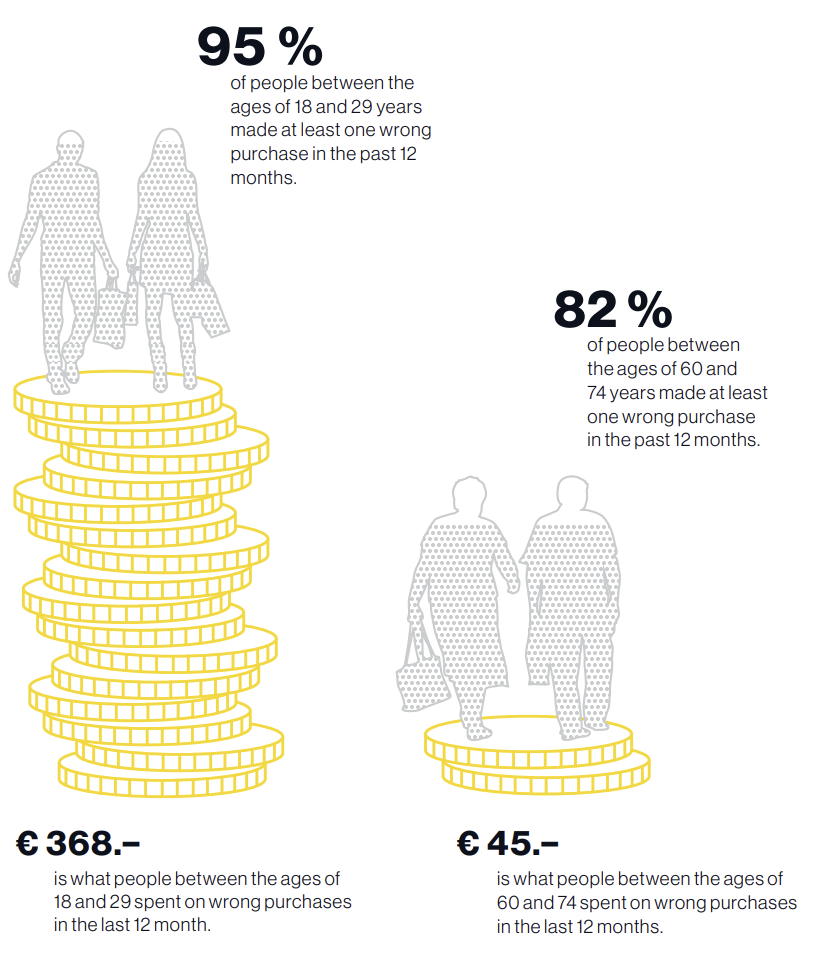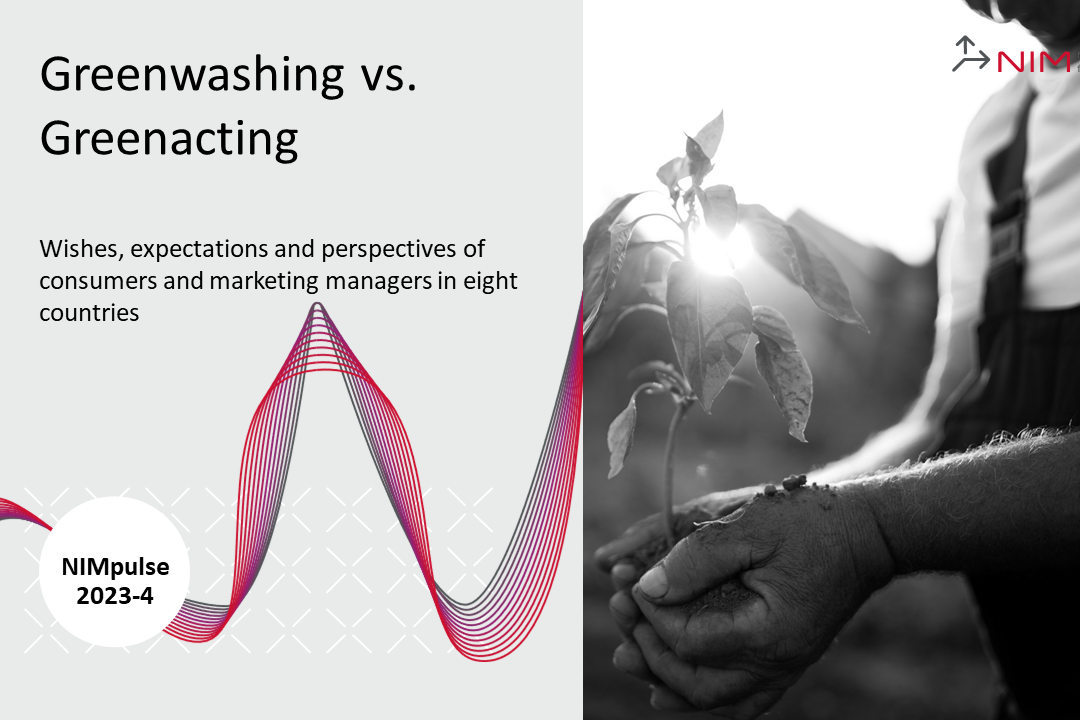Publikationen
2024
Dr. Andreas Neus
Wrong Purchases: When Consumers, Society, and the Climate all Lose
Nine out of ten people in Germany make wrong purchase decisions from time to time. In individual cases, the scratchy sweater or the underperforming tablet may be merely annoying, even in times of high inflation and declining purchasing power. However, at the level of society as a whole, bad buys cause immense damage. A recent study by the Nuremberg Institute for Market Decisions (NIM) puts the figure at just under EUR 9 billion over the past 12 months. This is not only an economic problem. It also has a negative impact on the environment and the climate.
Fortunately, wrong purchases go down the older one becomes. While 95% of adults between the ages of 18 and 29 years say they have made at least one wrong purchase in the past 12 months, the percentage drops to 82% for people between the ages of 60 and 74 years. Even more telling is the decline in spending levels. Best agers, for example, say they have spent €45 on wrong purchases in the past 12 months. According to their figures, 18- to 29-year-olds spent €368 in the same period, around eight times as much on items they subsequently rated as wrong purchases.
Over half of wrong purchases remain unused or end up in the trash
Most wrong purchases are made online, with little difference between crossrange online platforms and specialty online retailers. On the contrary, purchases made in stationary stores are much less likely to fail. The difference is mainly due to people between the ages of 60 and 74 years, who are much less likely to make mistakes in a brick-and-mortar store than when shopping online. The consequences of online bad buys are diverse. Most online stores process returns free of charge for consumers, thus protecting them to some extent from financial damage.
Returning the product to the retailer is the most common response to a wrong purchase. However, returns put a strain not only on customers’ tight time budgets but also on the environment because they must be transported back to the retailer after delivery. The additional transportation results in additional emissions. And there is another adverse effect that can be observed: 7% of the respondents throw their wrong purchases in the trash, and what is not returned or gotten rid of often ends up collecting dust somewhere at home. The negative side of this is that the production and distribution of these superfluous products ultimately cause superfluous emissions
Wrong purchase avoidance strategies are widespread
The data clearly shows that wrong purchase decisions are the norm rather than the exception in Germany. However, there is also a high awareness of the problem, and more people are trying to make better buying decisions. The most common strategy is not to be pressured into making a purchase. Preparing for the purchase and doing research are also common strategies. Many prepare by reading product reviews from professionals before purchasing or by gathering information through online customer reviews or the opinions of those in one’s social environment.

In particular, young consumers are taking the wrong steps to avoid wrong purchases
There is no shortage of avoidance strategies. So what is causing all the wrong purchases? According to NIM data, one reason lies in the fact that the avoidance strategy often doesn’t match the cause of the wrong purchase decision. Take consumers under 30 years old, for example: By their admission, this group disproportionately makes bad purchase decisions because of tempting offers and poor information. Shopping under time pressure is rarely the cause. Nevertheless, taking time to make a purchase decision is the most common avoidance strategy.
Older people see the responsibility for a wrong purchase primarily with the consumer, while younger people consider the manufacturer and the retailer responsible
Regardless of age group, the most frequently mentioned reasons for wrong purchases were tempting offers and advertising. However, respondents aged between 60 and 74 years blame the wrong purchase primarily on consumers. Best agers seem to accept that advertising sometimes creates false expectations. The situation is quite different for those under 30 years old. Here, the majority sees manufacturers and retailers as responsible for their wrong purchases. The younger generation is also more likely than average to want legislators to require manufacturers and retailers to present purchase-related information in an objective and easily comble way. The question remains whether young people are particularly critical of advertising or whether their criticism diminishes with age and experience. It is probably not possible to completely avoid the problem. Our advice: People who frequently make wrong purchases should analyze the reasons for this and take appropriate action, like comparing offers carefully and not letting their emotions take the lead.
Key Insights
- Nine out of ten people in Germany make wrong purchase decisions from time to time. The financial volume in the last 12 months amounted to almost EUR 9 billion.
- Younger people make mistakes more often than older ones. Their spending on wrong purchases is about eight times higher than that of 60- to 74-year-olds.
- Most wrong purchases are made online, and the most common response is to return the product to the retailer. This protects the customer from financial loss but has a negative impact on the environment and the climate
- Strategies for avoiding wrong purchases are widespread but ineffective. Young consumers, for example, often make mistakes because of tempting offers. Research into whether a special offer is a good deal is rare.
- Promotions and advertising are cited as the number one reason for wrong purchase decisions. Older people hold consumers responsible, whereas younger people blame manufacturers and retailers.
Autorinnen und Autoren
- Tobias Biró, Head of Research Communication, NIM, tobias.biro@nim.org
- Dr. Andreas Neus
Kontakt







